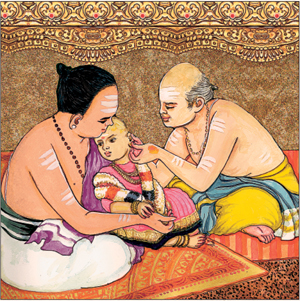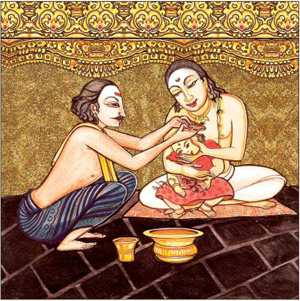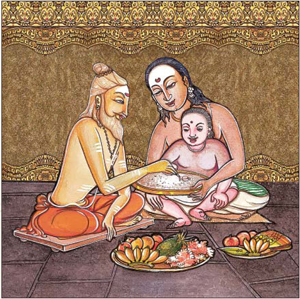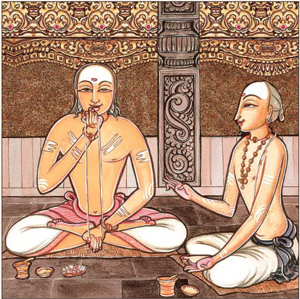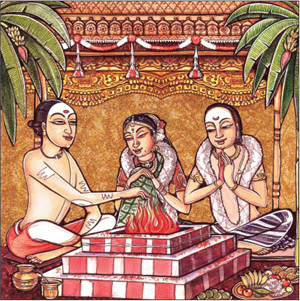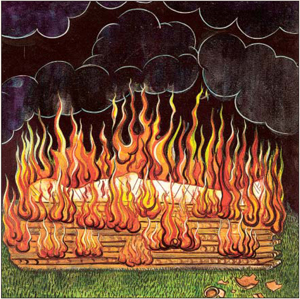
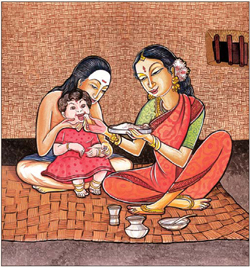
Anna Prasana, First Solid Food§
During the anna prasana samskara, solid food is fed to the child for the first time. This is done by the father or the mother in the temple or at home. The choice of food, such as rice, offered to a child at this crucial time of life is said to help forge his or her destiny.§
The best rendering of samskara in English is made by the word sacrament, which means “religious ceremony or act regarded as an outward and visible sign of inward and spiritual grace.” Sacrament also means “confirmation of some promise or oath; things of mysterious significance, sacred influence and symbol.”§
Sri Raj Bai Pandey, Hindu Samskaras§
Seven Other Rites of Passage
In addition to the primary personal ceremonies, there is a rich collection of other traditional samskaras. Here is a sampling.
§
Keshanta Kala
When a boy first shaves his facial hair, this indication that he has come of age is celebrated in the temple or at home with the keshanta samskara. It is a joyous time of gift-giving, yet it is serious as well. Often a vow of brahmacharya (celibacy) is taken at this same time.§
Ritu Kala
As puberty dawns for a young girl, the ritu kala home-ceremony is performed to acknowledge her first menses. New clothing, jewelry and her first sari are given as she joyously and openly joins the young adult community.§
Samavartana
This ceremony—literally, “returning home from the house of the guru”—marks the end of studentship and indicates formal closure to the brahmacharya period of life. The young person now must choose one of two paths: the grihastha path (family life) or the renunciate path (monastic life).§
Nishchitartha or Vagdana
This is the betrothal ceremony in which a man and woman are declared formally engaged by their parents with the exchange of jewelry and gifts. Based on this commitment, they and their families begin planning a shared future.§
Punsavana
The literal meaning of the term punsavana is “the quickening of a male child.” Not practiced today, this ceremony was performed by the husband for the wife beseeching the birth of a son, primarily as an assurance for the continuance of the family line.§
Simantonnayana
This is the “hair-parting” rite. Not commonly practiced today, this ancient ceremony of parting the hair of the pregnant wife was performed to bring cheer as well as ward off evil spirits.§
Jatakarma
During the later days of pregnancy, a woman may have the jatakarma samskara performed. This rite, based on a verse from the Atharva Veda written specifically to assure safe childbirth, was designed to yield blessings for life as well as protection from harm for both mother and child.§
